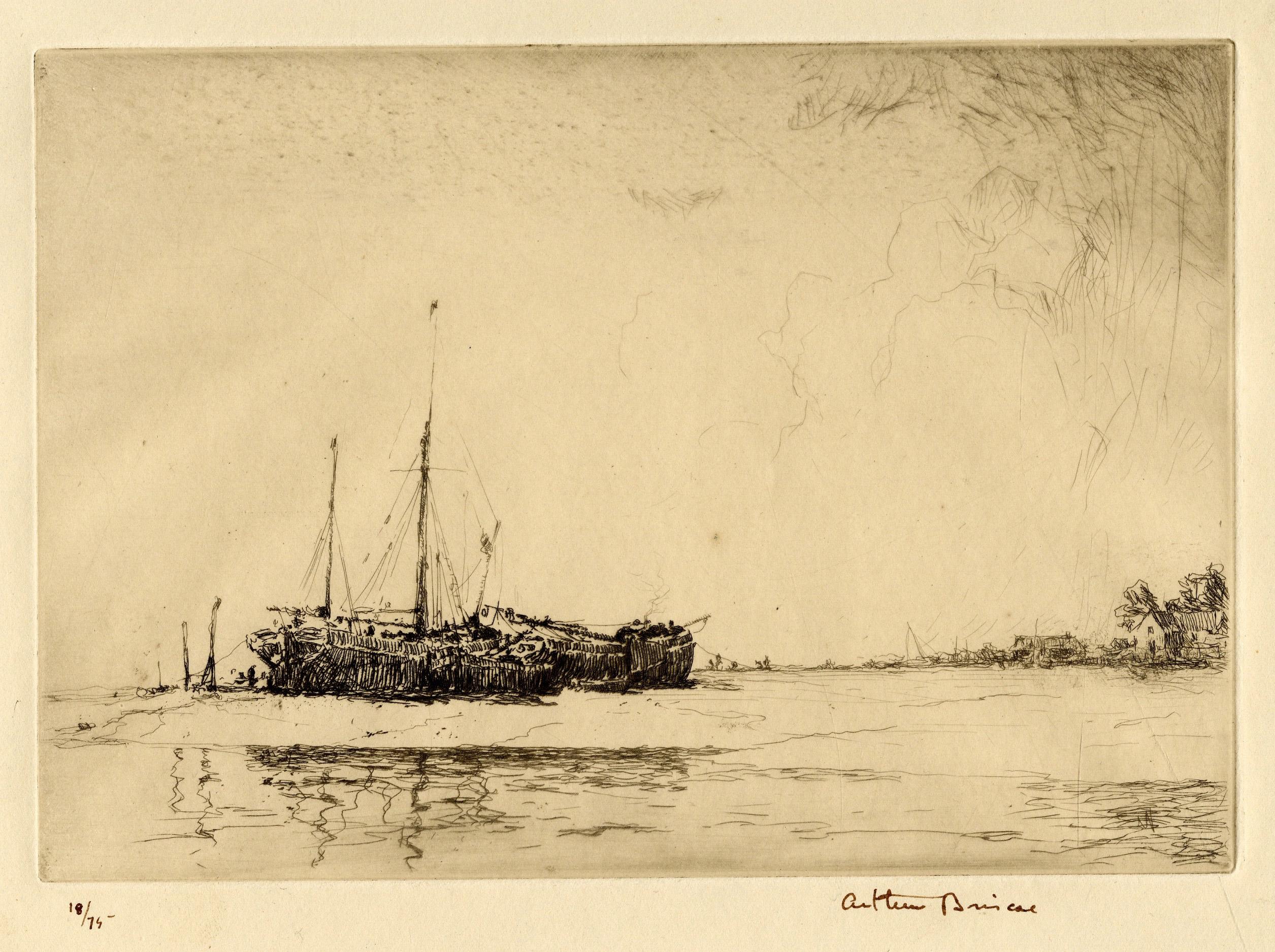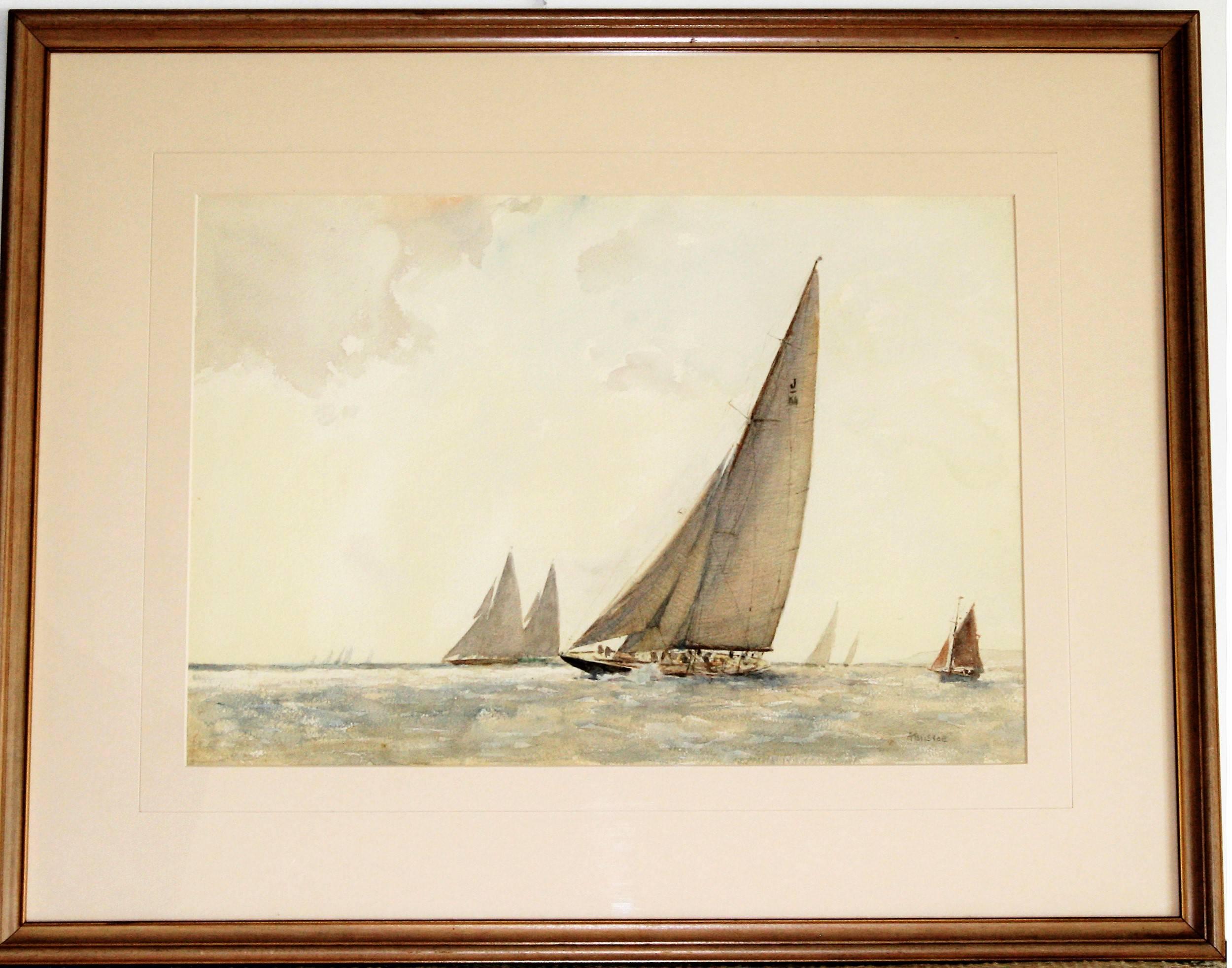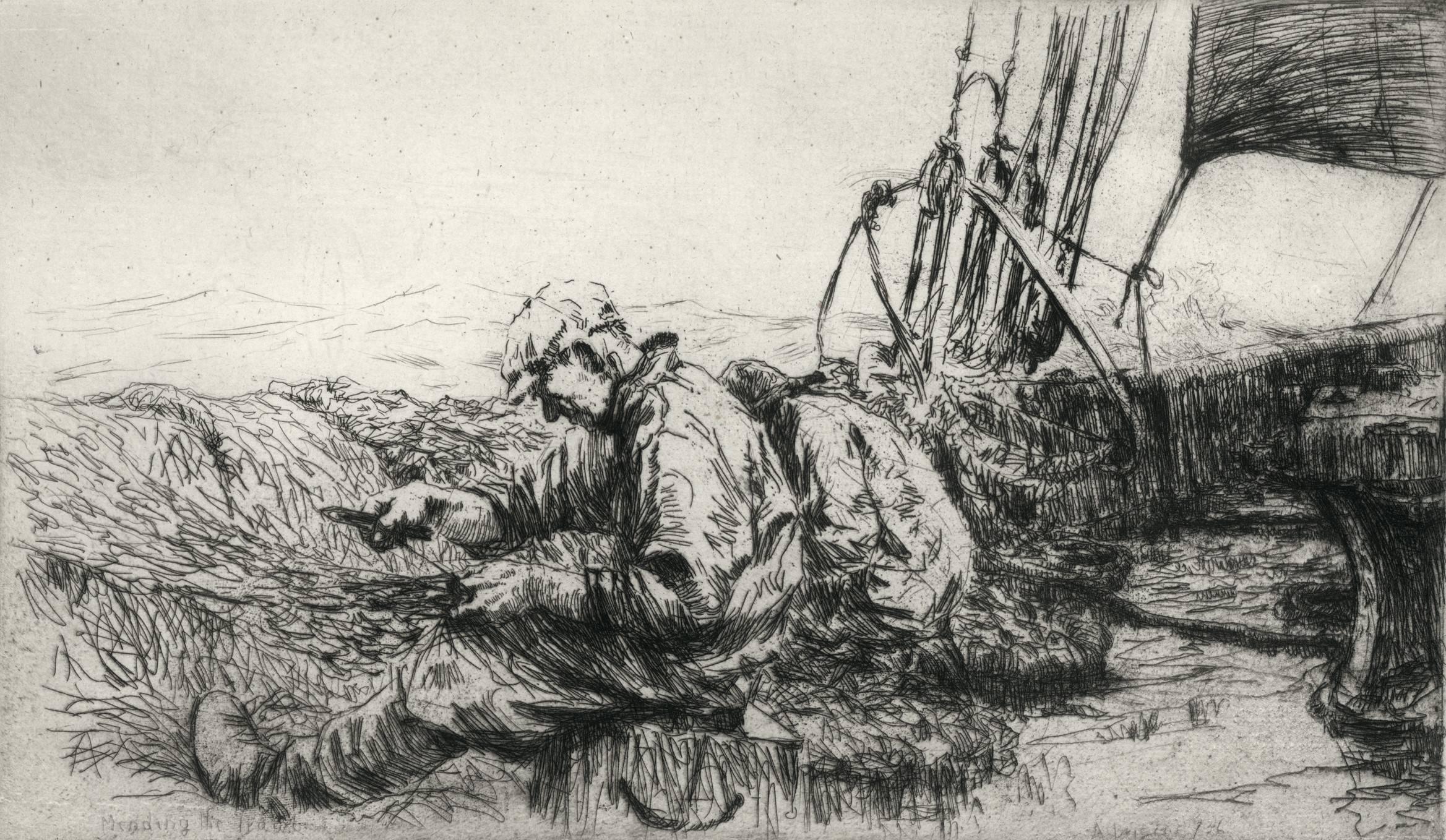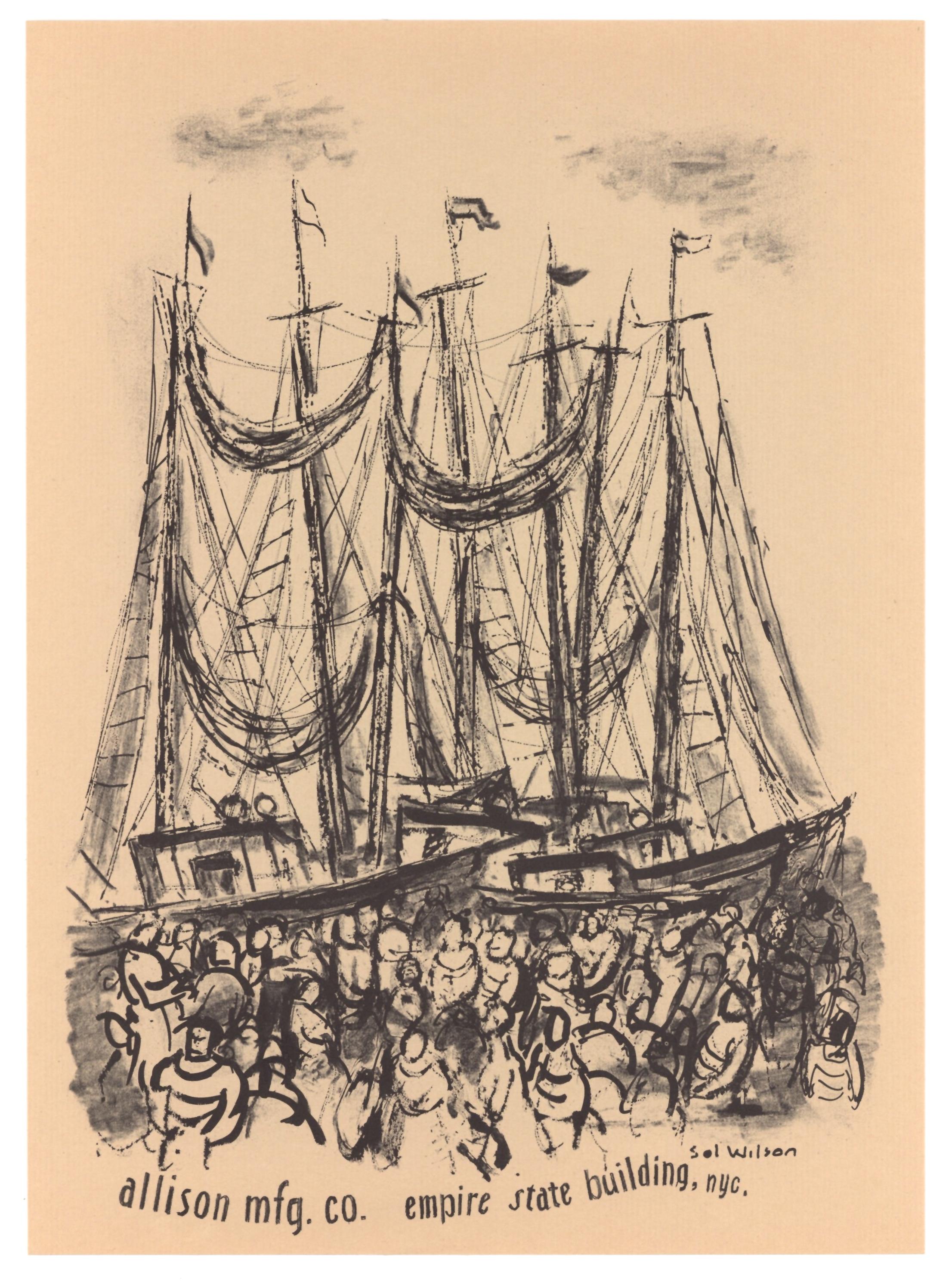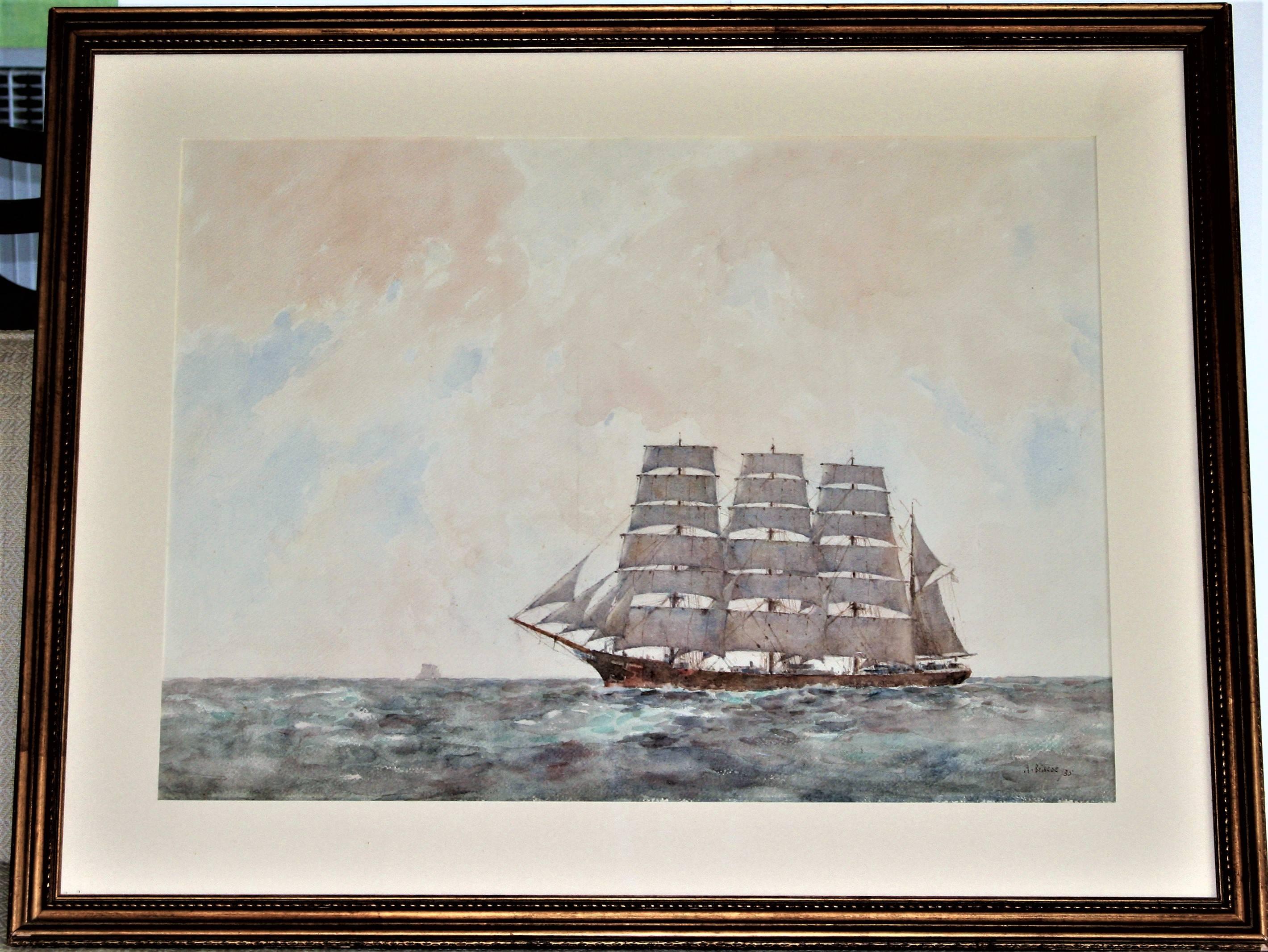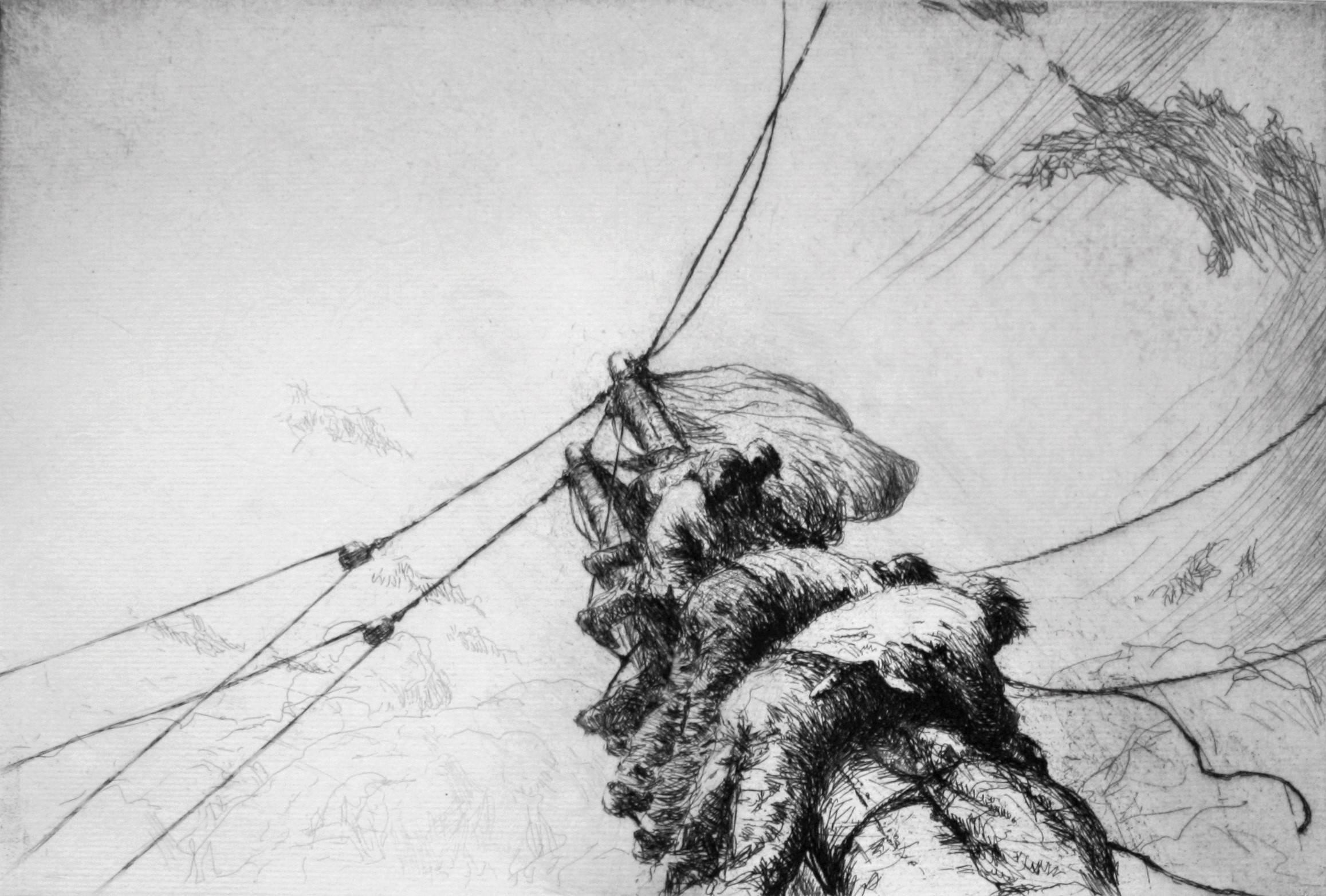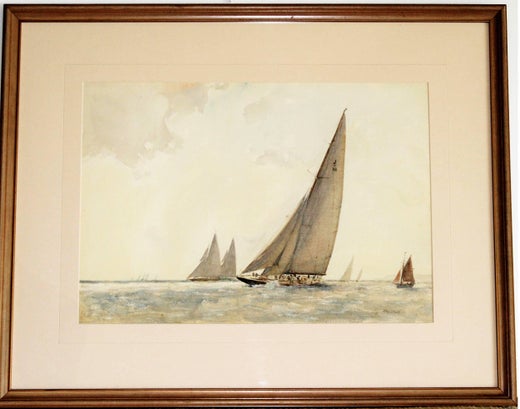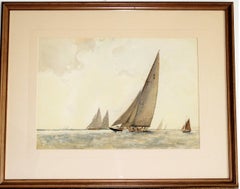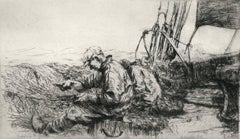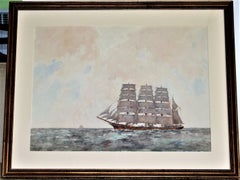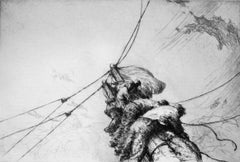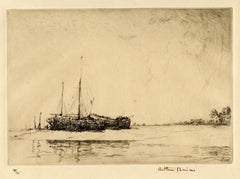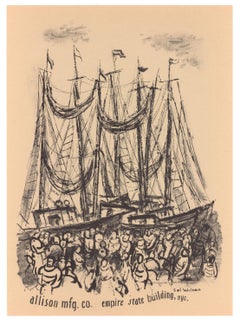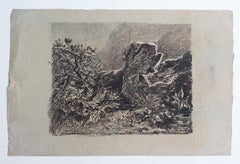Want more images or videos?
Request additional images or videos from the seller
1 of 4
Arthur John Trevor BriscoeMake Fast, Plate 2.1929
1929
$1,800
$2,25020% Off
£1,338.90
£1,673.6220% Off
€1,567.58
€1,959.4820% Off
CA$2,511.61
CA$3,139.5120% Off
A$2,810.56
A$3,513.2020% Off
CHF 1,467.54
CHF 1,834.4320% Off
MX$34,552.95
MX$43,191.1920% Off
NOK 18,514.76
NOK 23,143.4520% Off
SEK 17,422.30
SEK 21,777.8720% Off
DKK 11,695.37
DKK 14,619.2120% Off
Shipping
Retrieving quote...The 1stDibs Promise:
Authenticity Guarantee,
Money-Back Guarantee,
24-Hour Cancellation
About the Item
Make Fast, plate 2. 1929. Etching. Laver catalog number 146; Hurst catalog number 258. Plate: 14 3/8 x 9 13/16 (sheet 17 5/8 x 11 3/4). Trial proof 2, before the edition or 75. Illustrated: Print Collector's Quarterly 25 (1938): 300. Printed on 'Gen Dedijon extra ordi[nary] watermarked cream laid paper. Signed and annotated 'A.B. 2' in ink. It is extremely rare to find early Briscoe proofs.
- Creator:Arthur John Trevor Briscoe (1873 - 1943, British)
- Creation Year:1929
- Dimensions:Height: 14.39 in (36.56 cm)Width: 9.82 in (24.95 cm)Depth: 0.5 in (1.27 cm)
- Medium:
- Movement & Style:
- Period:
- Condition:
- Gallery Location:Storrs, CT
- Reference Number:1stDibs: LU335210601822
Arthur John Trevor Briscoe
Muirhead Bone was born in Partick, a suburb of Glasgow in 1876. As a young man, he was apprenticed to a firm of architects and in the evenings attended classes at the Glasgow School of Art. Aware his vocation was art, and not architecture, he devoted his time almost exclusively to drawing. He continually sketched the streets, buildings, and slums of Glasgow imbuing the urban decay with dignity and sentiment he so admired in the work of the Dutch artists whose townscapes he had studied in the Glasgow Corporation Art Galleries. Bone moved to London in 1901, holding his first exhibition at the Carfax Gallery in 1902. His success both critically and financially was rapid. His status as an etcher in the early years of the last century placed him among the world's most celebrated artists. It is not an exaggeration to say that his international reputation among collectors and the curators of the 'Great Print Rooms' of Europe and America was without parallel. He was appointed the first Official War Artist in World War I and was the doyen of War Artists in the Second World War. He was instrumental in the foundation of The Imperial War Museum and became a Trustee of The Tate and The National Gallery. He was knighted for his services to art in 1937.
About the Seller
5.0
Recognized Seller
These prestigious sellers are industry leaders and represent the highest echelon for item quality and design.
Established in 1977
1stDibs seller since 2016
725 sales on 1stDibs
Typical response time: 6 hours
Associations
International Fine Print Dealers Association
- ShippingRetrieving quote...Shipping from: Storrs, CT
- Return Policy
Authenticity Guarantee
In the unlikely event there’s an issue with an item’s authenticity, contact us within 1 year for a full refund. DetailsMoney-Back Guarantee
If your item is not as described, is damaged in transit, or does not arrive, contact us within 7 days for a full refund. Details24-Hour Cancellation
You have a 24-hour grace period in which to reconsider your purchase, with no questions asked.Vetted Professional Sellers
Our world-class sellers must adhere to strict standards for service and quality, maintaining the integrity of our listings.Price-Match Guarantee
If you find that a seller listed the same item for a lower price elsewhere, we’ll match it.Trusted Global Delivery
Our best-in-class carrier network provides specialized shipping options worldwide, including custom delivery.More From This Seller
View AllThe Endeavour.
By Arthur John Trevor Briscoe
Located in Storrs, CT
The Endeavour. c.1935. Pencil and watercolor on watercolor board. 14 3/8 x 20 7/8. Signed in pencil, lower right; titled in pencil, verso. Housed in a subtle 23 1/2 x 36-inch light ...
Category
1930s Modern Landscape Drawings and Watercolors
Materials
Pencil, Watercolor
$2,000 Sale Price
50% Off
Mending the Trawl, plate 3.
By Arthur John Trevor Briscoe
Located in Storrs, CT
Hurst 166. 6 7/8 x 11 3/4 (sheet 9 x 13 1/2). Edition 75, #73. A rich impression with dramatic plate tone, printed on cream laid paper with a foolscap watermark. Signed and numbered ...
Category
Early 20th Century Modern Figurative Prints
Materials
Etching
$1,000 Sale Price
48% Off
The Archibald Russell.
By Arthur John Trevor Briscoe
Located in Storrs, CT
The Archibald Russell. 1935. Pencil and watercolour on watercolour board. 20 7/8 x 28 5/8. Mat line from a previous mount; otherwise excellent condition. Signed and dated in ink, low...
Category
1930s Modern Landscape Drawings and Watercolors
Materials
Pencil, Watercolor
$3,000 Sale Price
40% Off
On the Yard, plate 3.
By Arthur John Trevor Briscoe
Located in Storrs, CT
Laver 139, Hurst 246. 8 7/8 x 13 7/8 (sheet 11 1/2 x 16 1/4). Trial proof. No published edition. An extremely rich impression with plate tone printed on 'antique laid paper countermarked 'DS&Pine 17940 with a Strasbourg lily watermark. Signed and annotated 'trial' in pencil. An exceptional proof of the greatest rarity.
Housed in a 16 x 20-inch archival mat, suitable for framing.
In 1899 Briwcoe acquired a studio in Malden, Essex, and bought a 3-ton cutter which, with his young family, he would spend eight or nine months a year, sailing to Calais, along the Belgian coast, and through the Dutch waterways, constantly sketching and painting in both oil and watercolor.
In 1922, after a meeting with the etcher James McBey, Briscoe returned to etching once more producing plates of some of his sea sketches. The two artists sailed together in Briscoe's, forty-ton yacht, the "Golden Vanity...
Category
Early 20th Century Modern Figurative Prints
Materials
Etching
$1,500 Sale Price
33% Off
The Helmsman
By Arthur John Trevor Briscoe
Located in Storrs, CT
The Helmsman. 1925. Etching. Hurst 130. 7 x 10 7/8 (sheet 11 x 5). Trial proof, apart from the edition of 75 An extremely rich impression printed cream wove paper. An exceptionally r...
Category
1920s Modern Landscape Prints
Materials
Drypoint, Etching
$2,000 Sale Price
20% Off
A Gale at Port Errol
By James McBey
Located in Storrs, CT
A Gale at Port Errol. 1923. Etching. Hardie 215, #46. 13 x 8 3/4 (sheet 16 7 /8 x 11 1/2). Edition 76. #46. Illustrated: Fine Prints of the Year, 1923. A rich...
Category
1930s Modern Landscape Prints
Materials
Drypoint, Etching
$1,250 Sale Price
37% Off
You May Also Like
On the Hard
Located in Middletown, NY
An elegant and delicate seascape of Brightlingsea Hard, Essex
circa 1925
18/75. Drypoint etching on cream laid paper, 5 1/2 x 7 7/8 inches (138 x 198 mm), full margins. Signed and ...
Category
1920s Realist Landscape Prints
Materials
Drypoint, Laid Paper
original lithograph
By Sol Wilson
Located in Henderson, NV
Medium: original lithograph. This lithograph was printed in 1956 for the "Improvisations" portfolio, published by the Artists Equity Association of New York on the occasion of the 19...
Category
1950s Prints and Multiples
Materials
Lithograph
Le Ferveur
By Jean-Emile Laboureur
Located in New York, NY
Jean-Emile Laboureur (1877-1943), Le Ferveur, etching, engraving, roulette, drypoint, 1928, signed in pencil lower left, numbered lower right, and annotated “imp.” Reference: Laboure...
Category
1920s Realist Landscape Prints
Materials
Engraving, Etching
Landscape - Lithograph - 20th Century
Located in Roma, IT
Landscape is a lithograph on paper realized by an unknown artist of the 20th century.
The state of preservation is very good.
Sheet dimension: 31 x 48 cm.
The artwork represents ...
Category
20th Century Modern Figurative Prints
Materials
Lithograph
$224 Sale Price
25% Off
READY CB
By Charles Bragg
Located in Aventura, FL
Etching on paper. Hand signed, titled and numbered by the artist. Sheet size 11 x 14.75 inches. Image size 7.5 x 9.5 inches. Edition of 300. Artwork is in excellent condition. Ce...
Category
Late 20th Century Contemporary Landscape Prints
Materials
Paper, Etching
$200 Sale Price
50% Off
Composition, Éloge de Gromaire, Marcel Gromaire
By Marcel Gromaire
Located in Auburn Hills, MI
Lithograph on vélin du Marais paper. Inscription: unsigned and unnumbered, as issued. Good condition with centerfold, as issued. Notes: From the volume, Éloge de Gromaire, 1958. Publ...
Category
1950s Modern Landscape Prints
Materials
Lithograph
$716 Sale Price
44% Off
Free Shipping
